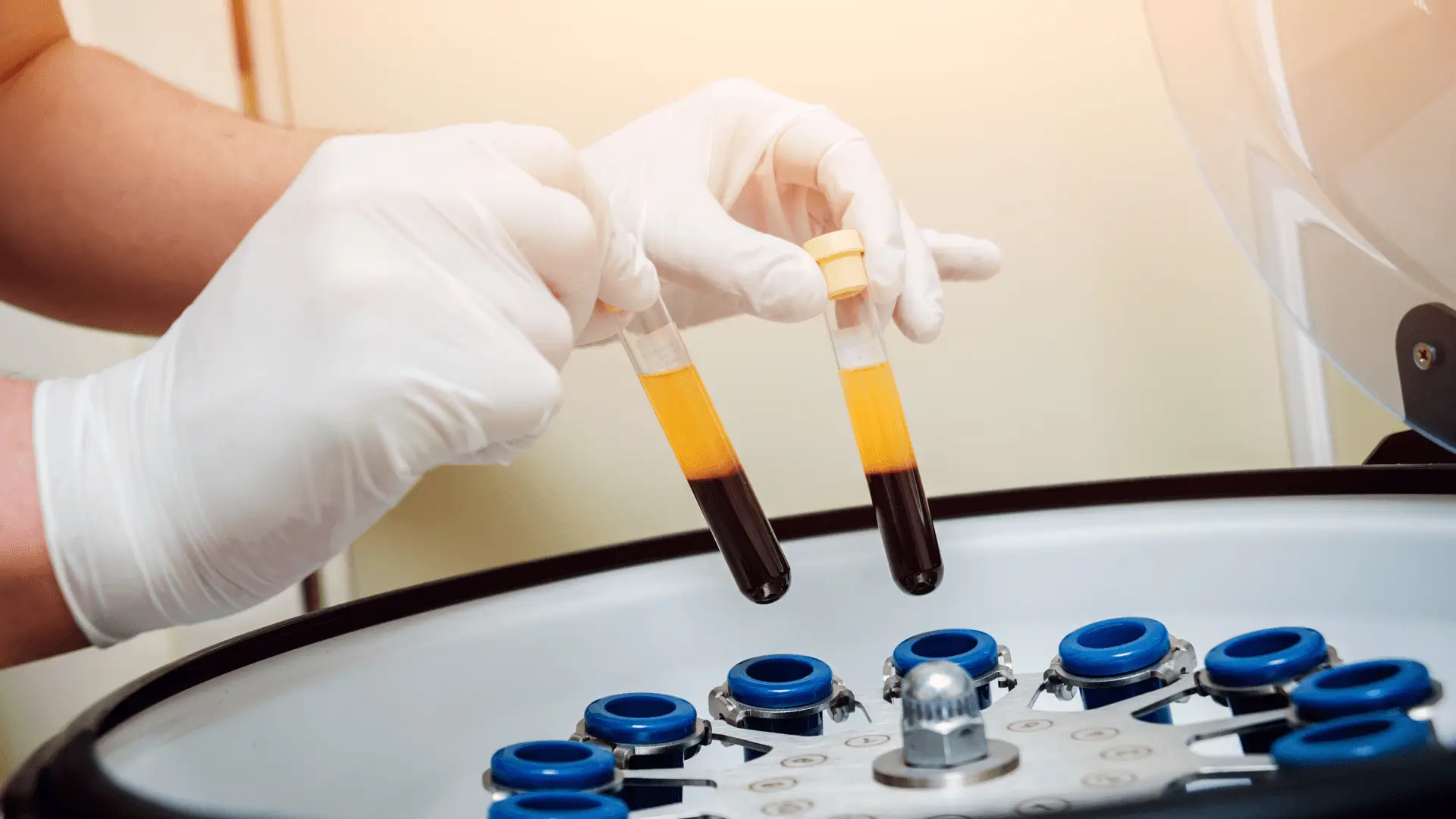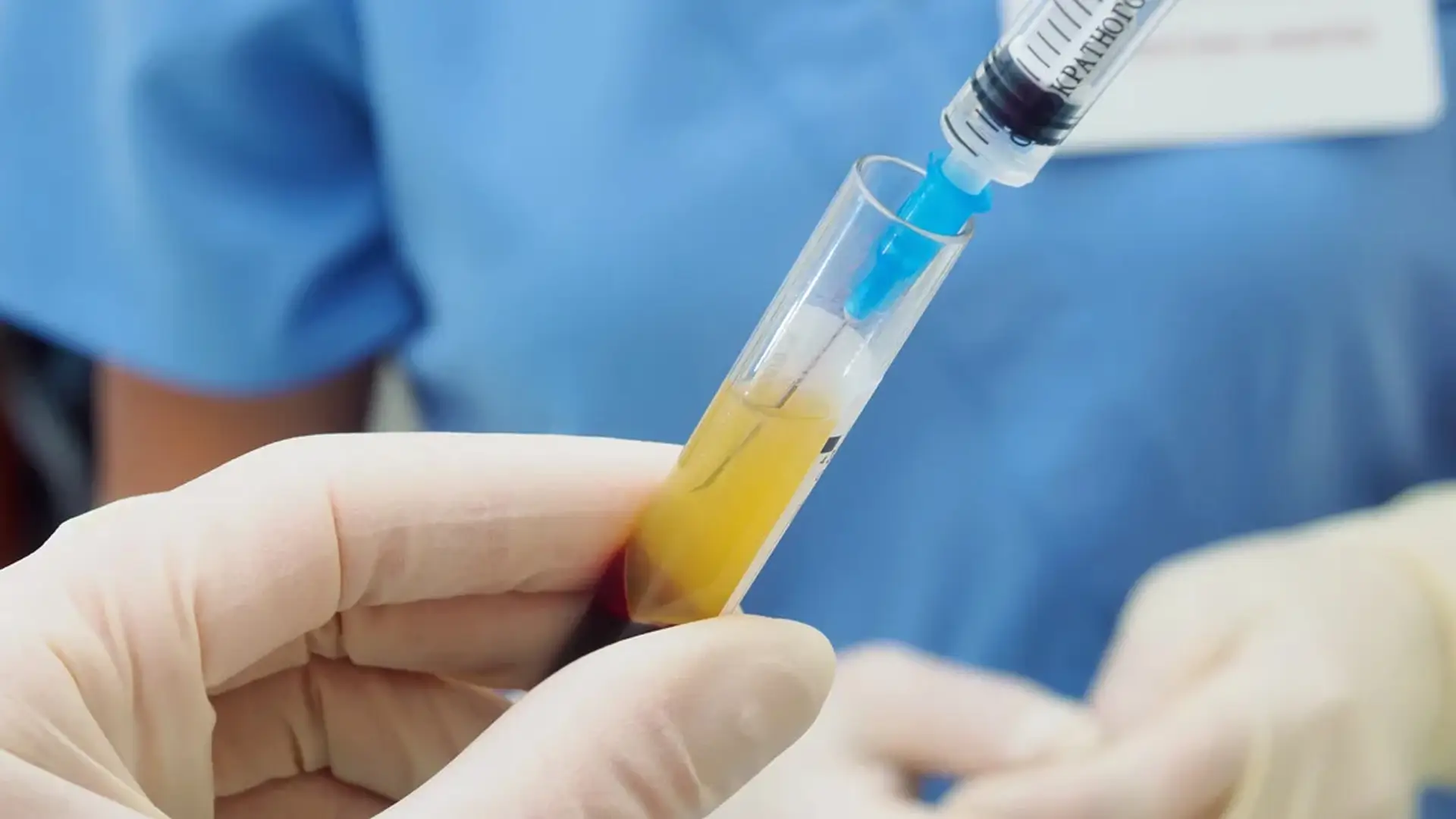Stem Cell Injections vs. PRP Injections
Regenerative medicine offers promising alternatives to traditional methods. Among the most talked-about therapies are Platelet-Rich Plasma (PRP) injections and Stem Cell injections, collectively known as orthobiologics. These advanced treatments use the body’s natural healing capabilities to address various joint and muscle conditions, from osteoarthritis to cartilage injuries.
This blog explains the mechanics of PRP and Stem Cell injections, exploring how each works, their specific applications in orthopedics, and critical factors such as cost and effectiveness. By the end, you will have a clearer picture of which treatment might best suit your needs, empowering you to make informed decisions about your orthopedic care.
What are PRP Injections?
Platelet-rich plasma (PRP) injections are a form of regenerative therapy that utilizes the patient’s blood to promote healing. The process begins with a simple blood draw. The blood is then placed in a centrifuge, which separates the platelets from other blood components. These concentrated platelets, rich in growth factors, are injected into the injured area. Growth factors are crucial in the body’s natural healing process by stimulating tissue repair and reducing inflammation.
PRP injections are commonly used to treat conditions such as tendonitis, ligament sprains, and early stages of osteoarthritis. The procedure is relatively quick and minimally invasive, often completed within an hour. Since PRP uses the patient’s blood, the risk of adverse reactions is minimal. However, the effectiveness of PRP can vary, and it is generally more suitable for milder cases of injury or degeneration. Regular follow-up treatments may be necessary to maintain the benefits.

What are Stem Cell Injections?
Stem Cell injections represent a more advanced approach in regenerative medicine, involving the use of undifferentiated cells that have the potential to develop into various cell types. These cells can be sourced from the patient’s bone marrow, adipose (fat) tissue, or sometimes from donor sources. Once harvested, the stem cells are processed and injected into the affected area.
The primary advantage of stem cells is their ability to differentiate and replace damaged cells, promoting healthy tissue regeneration. This makes them particularly effective for severe injuries or degenerative conditions such as osteoarthritis or significant cartilage damage. The procedure, however, is more complex and often more expensive than PRP injections, involving specialized laboratory processing.
Despite the higher cost and complexity, the potential for long-lasting and significant tissue regeneration makes stem cell therapy a compelling option for patients with substantial tissue damage. Ongoing research continues to expand our understanding and applications of stem cell therapy in orthopedics.
Difference between PRP Injections and Stem Cell Injections
The primary difference between PRP and Stem Cell injections lies in their sources and mechanisms. PRP is derived from the patient’s blood, concentrating platelets that are rich in growth factors. These growth factors enhance the body’s natural healing processes, making PRP particularly effective for treating mild to moderate injuries.
In contrast, Stem Cell injections involve undifferentiated cells, which can develop into specialized cell types. These cells can come from the patient’s bone marrow, adipose tissue, or a donor. Stem cells can regenerate damaged tissue by replacing lost or dysfunctional cells, making them suitable for more severe conditions. While both treatments aim to promote healing, their differing origins and mechanisms mean they are used for varying levels of injury and degeneration.
How Do They Work Differently?
PRP and Stem Cell injections function through distinct biological processes. PRP works by concentrating the platelets from the patient’s blood, which are injected into the damaged area. The growth factors released by these platelets accelerate the body’s natural repair mechanisms, enhancing tissue healing and reducing inflammation. This process is relatively quick and straightforward.
On the other hand, Stem Cell therapy involves harvesting undifferentiated cells capable of developing into specialized cells. These stem cells are processed and injected into the injury site, where they can differentiate and replace damaged tissue, promoting regeneration and healing at a cellular level. This process is more complex and requires careful handling and laboratory preparation of the cells.

Pros and Cons of PRP and Stem Cell Injections
PRP and Stem Cell injections offer unique advantages and drawbacks, making them suitable for different orthopedic conditions and patient needs. Understanding these pros and cons is essential for deciding which therapy is best for your situation.
Pros & Cons of PRP:
Pros
- Cost: PRP is generally more affordable than Stem Cell therapy, making it accessible to a broader range of patients.
- Complexity: The procedure is simpler and quicker, typically completed within an hour, with minimal preparation required.
- Safety: PRP uses the patient’s blood, so there is a low risk of adverse reactions or immune responses.
Cons
- Longevity: The effects of PRP injections may be short-lasting, often requiring follow-up treatments every six to twelve months.
- Effectiveness: PRP is typically more effective for mild to moderate conditions and may not provide sufficient benefit for severe injuries or advanced degenerative diseases.
Pros & Cons of Stem Cells:
Pros
- Longevity: Stem Cell therapy often provides longer-lasting results compared to PRP, reducing the need for frequent treatments.
- Efficacy: Stem cells can regenerate damaged tissue, which is highly effective for severe injuries and advanced conditions like osteoarthritis.
Cons
- Cost: Stem Cell treatments are more expensive due to the complexity of the procedure and the need for specialized laboratory processing.
- Evidence: While promising, Stem Cell therapy is relatively new, and long-term clinical evidence is still emerging. This means there may be less specific guidance on its use in some orthopedic applications.
Understanding these pros and cons can help patients and healthcare providers decide on the most appropriate treatment based on the severity of the condition, the patient’s health status, and other factors.

Which Treatment is a Better Option for Me?
Choosing between PRP and Stem Cell injections depends on various factors, including your condition’s severity, health status, and treatment goals. PRP injections are often recommended for patients with mild to moderate orthopedic conditions, such as early-stage osteoarthritis, tendonitis, and ligament sprains. These injections are relatively quick, less complex, and more affordable, making them an excellent choice for those seeking a minimally invasive option with a shorter recovery time. However, PRP may require multiple sessions to maintain its benefits.
In contrast, Stem Cell therapy is better suited for more severe injuries and advanced degenerative diseases. If you have significant cartilage damage, advanced osteoarthritis, or substantial tissue loss, Stem Cell injections might be more effective. These cells can regenerate damaged tissue and provide longer-lasting results. Despite being more costly and complex, the potential for significant tissue regeneration makes Stem Cell therapy a better option for patients needing more vigorous treatment. Consulting with an orthopedic specialist is essential to determine the best treatment for your needs. Your doctor can evaluate your condition and help you understand the benefits and limitations of each therapy, ensuring you make an informed decision.
Conclusion
In the evolving field of regenerative medicine, both PRP and Stem Cell injections offer promising alternatives to traditional orthopedic treatments. While PRP is an accessible and less invasive option ideal for mild to moderate conditions, Stem Cell therapy provides a more advanced solution for severe injuries and degenerative diseases. Each treatment has unique benefits and limitations, so considering your specific condition and treatment goals is essential when deciding the best approach.
For a thorough evaluation and personalized treatment plan, consider consulting with Comprehensive Spine Center Regenerative Medicine experts. Their experienced team can guide you through the complexities of these advanced therapies, ensuring you receive the most effective care tailored to your needs. By leveraging the latest regenerative medicine, they can help you achieve better outcomes and improved quality of life.
Frequently Asked Questions
Stem cell injections involve introducing stem cells into the body to promote tissue regeneration, while PRP injections use platelet-rich plasma from the patient’s blood to accelerate healing. Stem cell therapy harnesses the body’s ability to repair itself on a cellular level, whereas PRP injections concentrate platelets to enhance healing in specific areas.
Both stem cell injections and PRP injections offer promising results for knee pain relief, but the effectiveness may vary depending on the individual’s condition. Stem cell therapy addresses the underlying cause by stimulating tissue repair, while PRP injections focus on reducing inflammation and promoting healing. Consultation with a healthcare professional can determine the most suitable option based on your needs.
Stem cell injections for back pain target damaged tissues and promote regeneration, potentially offering long-term relief. In contrast, PRP injections for back pain concentrate platelets to reduce inflammation and enhance healing in affected areas. While both treatments show promise, the choice between stem cell therapy and PRP injections depends on factors such as the severity and underlying cause of the back pain.
Stem cell injections for arthritis aim to repair damaged cartilage and tissue, potentially slowing down the progression of the disease and improving joint function. PRP injections for arthritis focus on reducing inflammation and alleviating symptoms. The choice between stem cell therapy and PRP injections depends on various factors, including the stage and type of arthritis and individual health goals.
In PRP injection for knee pain, a small amount of blood is drawn from the patient and then centrifuged to separate platelets injected into the knee joint. Stem cell injections for knee pain involve harvesting stem cells from the patient’s bone marrow or fat tissue and injecting them into the affected area to promote tissue repair and regeneration. Both procedures are minimally invasive and typically performed on an outpatient basis.

